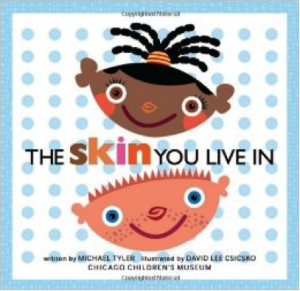Being Racially Colorblind is a Myth
One day while shopping in a big warehouse-type store, I lost my 7-year-old. She was mad at me for not buying what she wanted, so she lagged behind the rest of us pouting about it. I kept turning to make sure she was still with us, but once when I looked, she was gone. I thought she was probably hiding around the corner. I began searching for her. I couldn’t find her. Starting to worry, I went to the front of the store to get assistance from the employees.
This particular store didn’t have a paging system; they used walkie-talkies to communicate. So I was directed to someone who could help me. I gave a description of what my daughter was wearing and told them she was 7 years old and that she was black. The man repeated my description over his walkie-talkie omitting the part about her being black.
He waited with me by the exit doors, as employees looked for her in the warehouse. Several minutes passed and they hadn’t located her. I asked him why he didn’t tell them they were looking for a black girl. He said it was against store policy. I begged him to please tell those looking for her that she is black. He hesitantly did so, including that her mother “insisted” that he tell everyone she is black. They found her within the next minute.
Noticing race doesn’t mean you are racist. It doesn’t mean you apply typical stereotypes associated with that race. It means that you acknowledge that humans are unique in appearance.
Something about their “policy” of not using race to describe a lost child really bothered me. We try to teach our children to be happy about who they are. We celebrate race and ethnicity in our home. Race describes your DNA, what you look like. Ethnicity describes where you originate. Race and ethnicity are not something to be ashamed of.
Have we become over-sensitive about race in our country? Have we become so politically correct or afraid of someone accusing us of being racist that we don’t see the beauty in race?
If ten people walk into a room and you are asked to describe each of them, wouldn’t you use their God-given physical features as well as the clothing they choose to wear or how they style their hair to describe them?
Everyone notices race. Being racially colorblind is a myth or perhaps a misnomer. I think some use the term “colorblind” to denote that they see everyone as human beings, as children of God, and don’t apply differential treatment based on color.
But here’s something you need to know: Noticing race doesn’t mean you are racist. It doesn’t mean you apply typical stereotypes associated with that race. It means that you acknowledge that humans are unique in appearance. We don’t all look the same, like other species.
Our four oldest children are adopted. One is white, the other three are black. When I became pregnant with our first biological child, one of the kids asked me, “Will this baby be brown or peach?” It was an honest question and we sat down and talked about how we get blue eyes vs. brown eyes, blonde straight hair vs. curly black hair, and brown skin vs. peach skin. When we had the children in with us for the ultrasound to learn the gender of our baby, one of the girls said, “Mom, I thought you said this baby was going to be peach.” I answered, “Yes. Mom and Dad are peach, so this baby will be too.” She matter-of-factly stated, “Well the baby looks gray to me.” My husband and I laughed and answered. “Yes, on an ultrasound we all look gray, no matter our race.”
Please, if you are becoming a transracial family, don’t be afraid to have racial conversations with your children. Have conversations with your children’s friends, with your extended families. Talk about what is appropriate and what is not.
Two of my favorite children books that acknowledge and celebrate race are:
The Skin You Live In by Michael Tyler and The Color of Us by Karen Katz. I shared both books with my children’s preschool classes. The teacher had the children mix different paint colors to make up a variety of skin colors then had each child paint a picture of him/herself. The pictures were adorable and each was unique.
 The Skin You Live In ends with these words:
The Skin You Live In ends with these words:
So whenever you look at your beautiful skin,
from your wiggling toes to your giggling grin . . .
Think how lucky you are that the skin you live in,
so beautifully holds the “You” who’s within.
And like flowers in the fields that make wonderful views,
when we stand side-by-side in our wonderful hues . . .
We all make a beauty, so wonderfully true.
We are special and different and just the same, too!
There is nothing wrong with seeing color, seeing race. It makes us who we are. We don’t live in a racially colorblind world. Some people are racist. Some people are not—but they are not “colorblind”; they simply treat others with equality and respect.
Next month, I am writing an article titled Listening to your Child of Color for Their Perspective on Race. Our children of color will feel different and be treated differently at some point in their lives because white privilege does exist.
If you are interested in reading more about colorblindness as it relates to race, this is a great article: 7 Reasons Why ‘Colorblindness’ Contributes to Racism Instead of Solves It.






